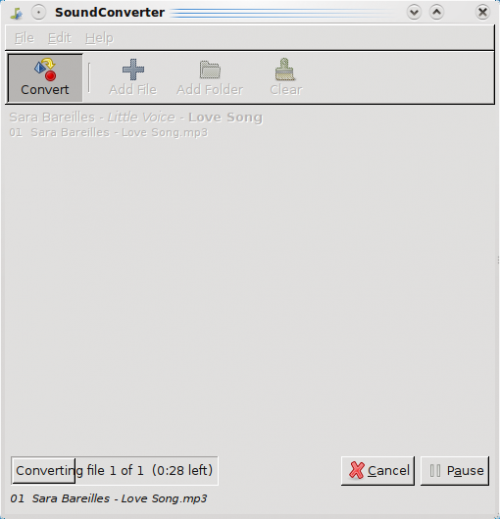

- #Install soundconverter ubuntu install
- #Install soundconverter ubuntu update
- #Install soundconverter ubuntu software
- #Install soundconverter ubuntu windows
Smaller ISO sizes are a vaunted aim (and something Ubuntu could do with) but would getting users to select their own software actually “simplify the installation process”? This sounds like an unsubtle way to force people into installing Snap versions of apps previously installed as DEBs This streamlined approach could reduce ISO size, decrease testing needs, and simplify the installation process,” he says. “With widespread Internet access today, obtaining the necessary apps is no longer a hurdle.
#Install soundconverter ubuntu install
Thus they plan - read: have already decided - to try a new unified install approach that lets users select apps to install/add during install time. Simply run the install command and press Y when asked.Ubuntu’s Director of Engineering says the current ‘minimal or full’ choice as “not-quite-right”. Ubuntu 17.10 already includes Budgie in the official repositories so you won’t need to rely on PPAs. Sudo apt install budgie-desktop 17.10 LTS Sudo apt install budgie-desktop 17.04 LTS sudo add-apt-repository ppa:ubuntubudgie/backports 16.04 LTS sudo add-apt-repository ppa:budgie-remix/ppa You might be required to press Y on your keyboard to confirm the installation.
#Install soundconverter ubuntu update
The second commands update the list of packages available and then the third commands install the Bungie desktop package to your system. You’ll be required to enter your password. The first commands add the respective PPAs according to your system version. Execute the commands given below one by one depending on your version of Ubuntu and follow the on-screen instructions. Depending on your Ubuntu version, you will need to add a PPA, or not. Budgie can be installed similarly via the Terminal. You may have used the Terminal plenty of times already to install and uninstall software. Installing Ubuntu Budgie desktop is not a hassle if you’re used to your Ubuntu by now. Read on: Try Ubuntu’s New Yaru Theme Right Now Installing Budgie Desktop 10.4 The applets may not be as flexible as GNOME extensions or Plasma widgets but that could change as popularity grows. It looks nice even with the default settings and works just as well. All in all, Budgie is a solid take at a modern Linux desktop. It is no match for the Plasma desktop’s customization, but it is still quite better than what GNOME or Unity offers. It also lets you customize the top panel’s size, make it transparent, add, remove, or move the applets on the top panel, etc. There are a number of things you can change here from application themes to fonts, icons, and cursors. If you’d like to turn these off you can do so with simple toggles. The themes look nice, but the look is not for everyone. The built-in theme simply prevents desktop elements like the panels from being affected by themes and keeps them dark. Budgie has a built-in theme and a dark theme. Clicking on the Settings button at the bottom of the Raven Sidebar Control opens up the Settings, not the music player. It does not need a separate Tweak tool and allows you to do a fair bit of customization. Modifying Budgie’s appearance is easier than GNOME’s.
#Install soundconverter ubuntu windows
For each workspace, the windows are now represented by icons in a grid layout.


 0 kommentar(er)
0 kommentar(er)
